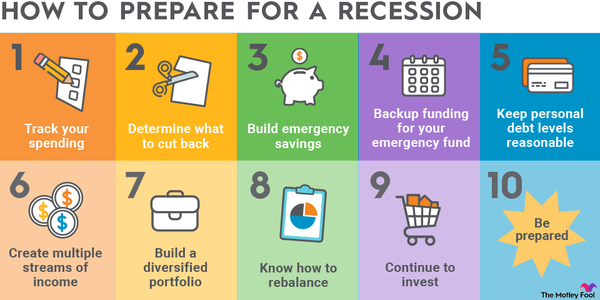
Revenue and profit are two of the most important numbers to focus on for business owners and stock investors alike. Revenue is the total amount of money the company has earned in a given period; profit is what's left after expenses have been deducted.
For some companies, markups and efficiency are so high that there isn't much of a difference between revenue and profit. For other, more capital-intensive businesses, a net profit of 2% or 3% is a good year.
Let's drill down into the key differences between the two numbers and then walk through an example.
Key differences between revenue and profit
The key difference is that revenue has not had any expenses deducted from it. Profit (and there are different kinds of profit) is revenue minus expenses. It can even be a negative number if the company lost money.
Revenue and the various types of profit are reported on the income statement (also known as the profit and loss statement). The statement starts with revenue on the top line and then goes through the types of expenses before ending with net income, or the bottom line.
Let's go over the different types of profit, starting at the top.
- Gross profit: The first type of profit is gross profit. Gross profit is equal to revenue minus cost of goods sold. The costs of goods sold vary by industry but follow the same general concept -- they are the direct costs tied to sales. For a company such as Target (TGT -0.44%), the cost of goods sold would include the cost of inventory and labor hours in stores. A company's gross margin gives you a good idea of how much it can mark up its goods or services from the prices it's paying to suppliers.
- Operating profit: The next one down the line is operating profit. Think of operating profit as gross profit minus overhead. Most other types of expenses that are key to operations -- such as rent, administrative salaries, and insurance -- are classified as operating expenses. Operating profit shows you how much money the core business is earning.
- Net profit: Net profit is what's left over after all other expenses are deducted. This includes taxes, interest expenses, and one-time items such as legal settlements. These expenses can vary greatly from year to year. The other expenses also aren't tied to business core operations, so they don't fit into the cost of goods sold or operating expenses categories. Net profit (and the earnings-per-share version, or EPS) is the number most followed by the stock market. Understanding that net profit may be volatile even when gross and operating profit are consistent can give you leg up on other investors.
Once you get the hang of evaluating financial statements, the differences in these numbers will be second nature. As a beginner, the most important thing to keep in mind is that revenue is the top line number that shows how much money the company has earned during the period. Profit is what's left over after the different types of expenses are covered.
Revenue vs. profit example
Let's look at two companies with very different cost structures, starting with Target:
| Oct. 31, 2021 (numbers in millions) | Dollar Amounts | Percentage |
|---|---|---|
| Revenue | $25,652 | 100% |
| Cost of Goods Sold | $18,206 | 71% |
| Gross Profit | $7,446 | 29% |
| Operating Expenses | $5,436 | 21% |
| Operating Income | $2,010 | 8% |
| Other Expenses | $522 | 2% |
| Net Income | $1,488 | 6% |
Target produced $25.7 billion of revenue in the third quarter of 2021. On average, $0.71 of every dollar went to cost of goods sold. That means, on average, the stuff you bought from Target costs them about 71% of what you paid, leading to a gross profit of $7.5 billion, or 29%.
Next, $5.4 billion, or 21% of revenue, went to operating expenses. For retailers like Target, it's normal for overhead to cost a lot less than the direct cost of goods sold.
Finally, taxes and other expenses amounted to $522 million, bringing Target's net profit, the bottom line, to $1.5 billion, or 6% of revenue.
Now let's look at DocuSign (DOCU 1.61%):
| Dec. 31, 2021 (numbers in thousands) | Dollar Amounts | Percentage |
|---|---|---|
| Revenue | $545,463 | 100% |
| Cost of Goods Sold | $115,975 | 21% |
| Gross Profit | $429,488 | 79% |
| Operating Expenses | $432,846 | 80% |
| Operating Income | ($3,358) | -1% |
| Other Expenses | $2,318 | 0% |
| Net Income | ($5,676) | -1% |
DocuSign isn't quite as big as Target; its quarterly sales came to $545 million. About 21% went to cost of goods sold, producing a $430 million gross profit, which was 79% of revenue.
The gross profit margin seems great until you see the operating expenses number, which was about $3 million more than gross profit. The expenses mean the company had an operating loss in the quarter equal to around 1% of revenue. Add in the other expenses, and the net loss was $5.7 million.
DocuSign's business model is completely different than Target's, and it shows in the income statement. DocuSign sells subscriptions to its valuable software services. Target buys products from other businesses, marks them up about 30%, and sells them in brick-and-mortar stores.
Related investing topics
Because of this business model difference, the cost structure is also completely different. Most of Target's expenses are in cost of goods sold because it has to pay for the inventory it sells. DocuSign's cost of goods sold is a lot lower as a percentage of revenue because it doesn't have many direct costs related to each sale.
Operating expenses are the opposite. Target pays for the overhead it needs to keep going, while DocuSign is investing in overhead. It paid $400 million in this quarter alone on research and development and sales costs. It is plowing all its gross profit into future growth, and the operating loss reflects that.

















